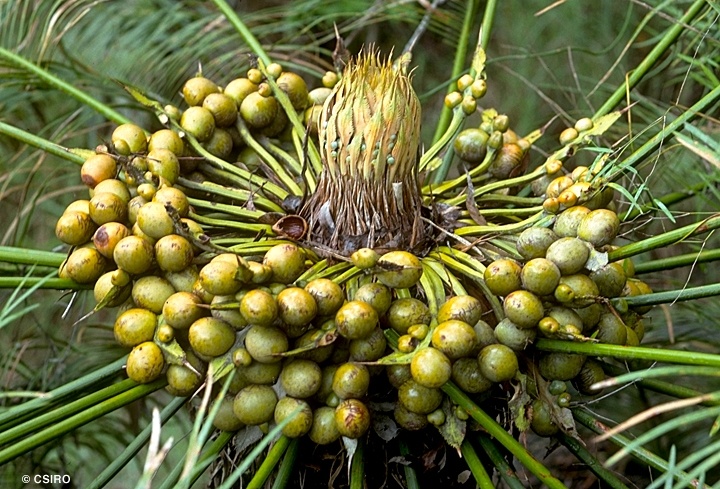Australian Tropical Rainforest Plants - Online edition
Cycas media R.Br.




Brown, R. (1810) Prodromus Florae Novae Hollandiae : 348. Type: Queensland, Calder Island, 16 Oct. 1802, R. Brown; holo: BM; iso: K.
Palm, Nut; Zamia Palm; Zamia Nut; Zamia; Queensland Cycas; Palm, Cycad; Nut Palm; Cycas; Cycad Palm; Cycad; Tree Zamia
Stem usually unbranched, rather squat and thick, seldom attaining 6 m in height.
Cataphylls about 3, clothed in rusty brown hairs. First true leaf compound with about 20 leaflets, midrib raised on the upper surface. At the tenth leaf stage: leaflet blade about 5 mm wide with a conspicuous raised midrib but no other obvious venation. Spines present towards the apex of the petiole. Taproot thick and swollen, carrot-like (Daucus carota). Coralloid roots present and sections of these roots reveal congregations of blue-green algae.
Occurs in CYP, NEQ, CEQ and southwards as far as coastal central Queensland. Altitudinal range from near sea level to about 1000 m. Usually grows in open forest but occasionally found in beach forest, monsoon forest and vine thickets. Also occurs in New Guinea.
The fruits and seeds of this species are poisonous. The first case occurred in 1770 on the Endeavor River when sailors on the Endeavor became ill after eating raw seeds. Later some of the pigs died after being fed on the seeds. Aborigines apparently ate the seeds only after careful preparation. Young leaves are poisonous to cattle. Everist (1974).
A very hardy plant, commonly planted in gardens or rockeries.





